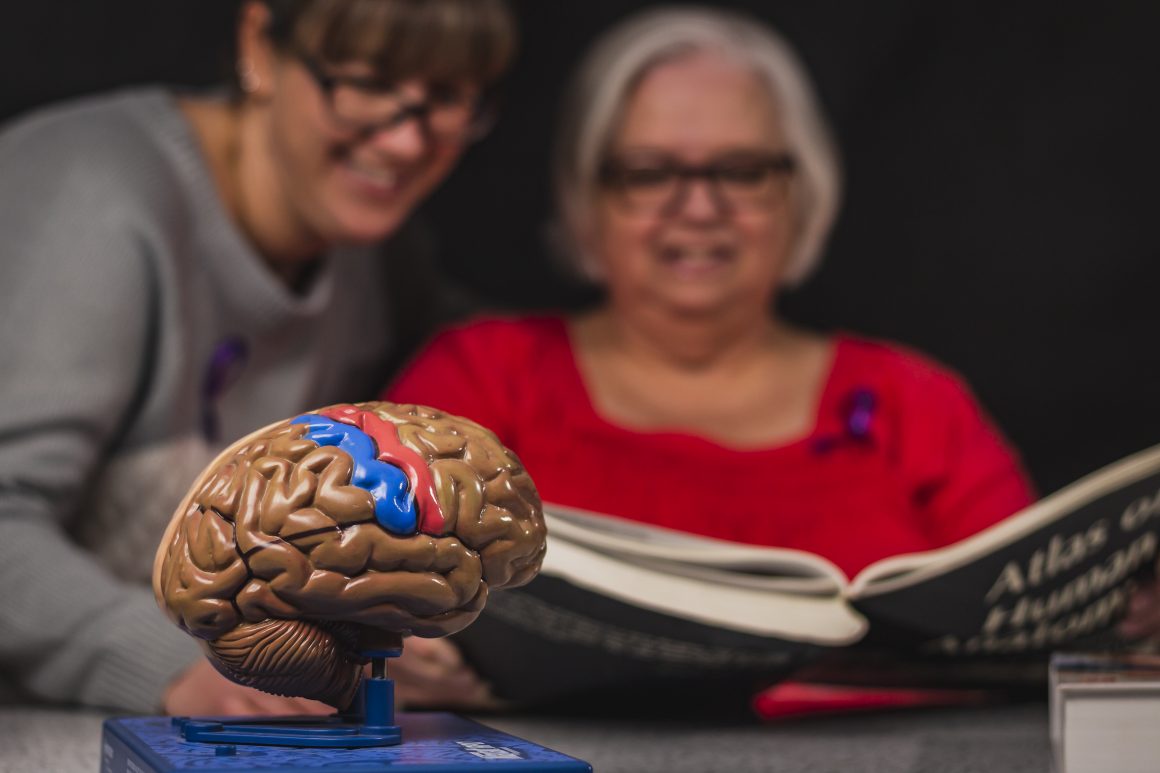
January marks Alzheimer’s awareness month
By Sergio Sharif, January 26 2022—
This January, it is Alzheimer’s awareness month. Although most have a general idea of what Alzheimer’s disease is, there is a poor appreciation of this issue, considering how big of an impact it has had and will continue to have both here and everywhere else.
A good starting point is to understand what Alzheimer’s disease (AD) is, and what it is not. AD is the most common cause of dementia, however, not all cases of dementia are caused by AD — this is a common misconception. It is an important distinction to make, as symptoms, treatment and length of disease can vary. Additionally, sometimes the symptoms of dementia are the consequence of a reversible process, such as vitamin deficiency or issues with the thyroid gland.
Common to all people with dementia is a significant impairment in daily functioning, due to the symptoms of the underlying disease. In AD, the most common symptoms include memory loss, difficulty with reasoning and completion of complex tasks and delusions.
Sometimes, those who go on to receive an AD diagnosis will start off having a less severe set of symptoms termed mild cognitive impairment, which has been used in turn to predict the risk of dementia diagnosis. However, an underappreciated but relevant set of symptoms are those concerned with inappropriate behaviour, agitation and apathy. Sometimes, these symptoms subtly appear and can even precede the time from when patients are diagnosed with full fledged dementia.
Amongst all the challenges AD presents, perhaps the most tragic is the slow yet inexorable decline people with it face. Someone who was once lively and sharp, outgoing and ebullient, now can’t even speak a complete sentence, feels depressed and doesn’t want to socialize with others.
Underlying the symptoms in AD is a biological process that begins decades before an individual even shows symptoms. Two proteins — termed amyloid-beta and tau — which serve important functions in brain health and functioning, start to accumulate into toxic clumps. These clumps throw the brain into cellular chaos, with first synapses — the vital connections between brain cells — being disrupted, and then eventually, the cells themselves dying.
The progresive decline seen in AD can be explained by the protracted spread of these protein aggregates throughout the brain. At first, these aggregates appear to cause no symptoms. Then they begin to inflict damage in brain structures responsible for memory, explaining the episodes of forgetfulness seen early in the disease.
Relentlessly, these clumps begin travelling through the whole brain, leaving a trail of destruction. By the time someone with AD dies, their brain has lost so many neurons that when examined it appears shriveled, bearing no resemblance to a healthy one.
Considering that this disease is most prevalent amongst the elderly, its devastation becomes all the more apparent when considering that many people in this age group tend to have multiple conditions. However, despite it being a disease most frequently seen as we age, it is not caused by aging.
A common misconception is that somehow embedded in the putative process of aging — at least for a subset of people — lies some sort of predisposition to AD and other diseases prevalent among the elderly. However, experts insist that instead AD arises due to the accruement of risk factors over a lifetime — factors that could be either modifiable or inherited.
With the number of seniors in Alberta likely to double by 2046 — and with similar trends elsewhere — and factoring in that the risk of dementia doubles every five years once someone reaches the age of 65, significant challenges for the affected individuals, their families and society lie ahead. A system already strained is only bound to get worse with an influx of high-needs patients.
Despite the many challenges AD presents, clinicians and scientists alike are working nonstop to improve the lives of those with AD and other dementias, as well as to find ways to prevent the disease altogether.
Although much of the clinical research thus far has focused on treating the symptoms rather than the responsible causes, recent breakthroughs in antibody therapies have proven to be revolutionary. However, many of these treatments are priced so high that justifying their widespread use has been argued to be untenable.
And even with these breakthroughs, the results have not been enough to warrant both the high cost and potential side effects of these therapies. A potential explanation tabled by many is that most interventions are far too late in the disease course to make a meaningful difference, which has led some to focus on ways to identify individuals at-risk who have not yet shown full-blown dementia.
When an individual receives a dementia diagnosis, the healthcare system will not be their only source of support. Another crucial part of the care with anyone who has dementia are the many organizations dedicated to helping families and educating caregivers — many of whom face considerable burnout. One organization with such aims is the Alzheimer Society of Canada, which has a chapter in Calgary.
The Alzheimer Society and its many chapters not only provide support to individuals with dementia, but also advocate for a better future for all those who develop it. There are also programs meant to educate the community and combat the rampant stigma and ageism those with dementia experience.
As a nonprofit, the Alzheimer Society relies heavily on donors and volunteers. To find out more on how you can get involved, check out their website at this link.
